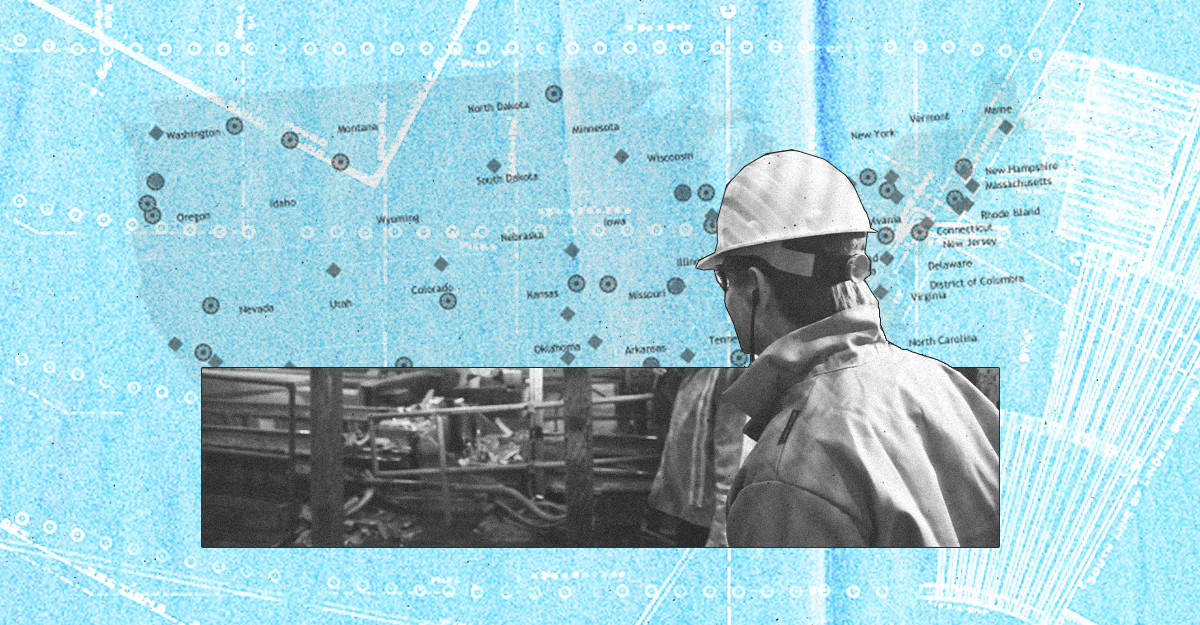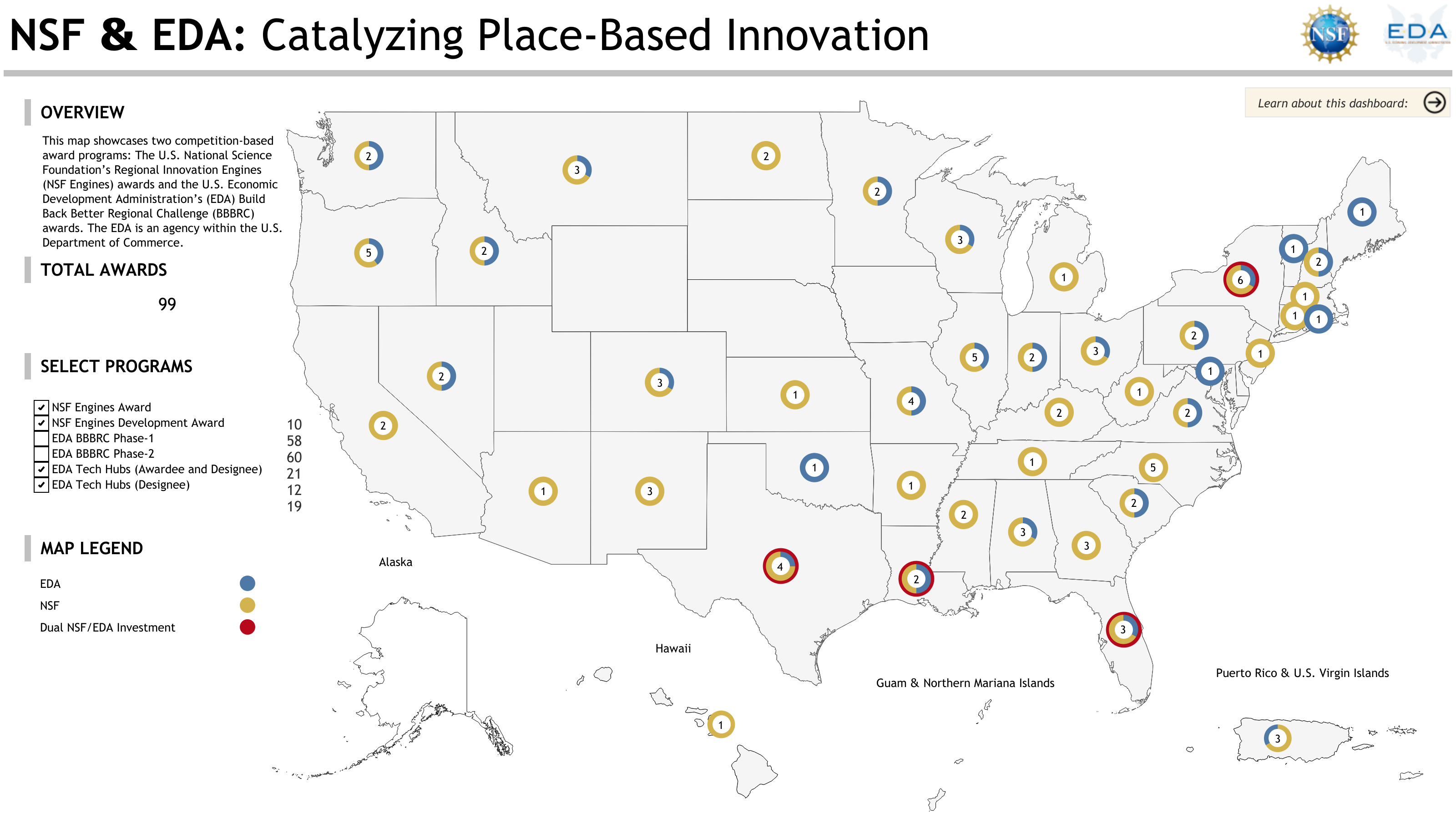
Bridging Innovation and Expertise: Connecting Federal Talent to America’s Tech Ecosystems
The semiconductor shortfall during the COVID-19 pandemic spotlighted the consequences of underinvesting in critical technology ecosystems. This wake-up call, following years of advocacy and growing consensus, spurred bipartisan action through the CHIPS and Science Act of 2022, which made transformative investments in the semiconductor industry as well as future-focused programs like the Economic Development Administration’s Regional Technology and Innovation Hubs (Tech Hubs) – a program I helped launch as EDA’s chief of staff – and the National Science Foundation’s Regional Innovation Engines (NSF Engines). These latter two initiatives – Tech Hubs and NSF Engines – are catalyzing dynamic innovation ecosystems across the country, advancing technologies critical to our national security and economic competitiveness while spurring broad-based regional economic growth.
But as these innovation ecosystems grow, so too does their demand for talent. Across these ecosystems, there is a need to fill specialized positions essential to their success. At the same time, we’re witnessing an exodus of talent from the federal service – scientists, engineers, technologists, workforce experts, and skilled generalists – professionals whose expertise could be lost altogether if not effectively deployed. While these departures are deeply troubling for government operations and the services Americans rely on, we face three pressing imperatives: preserving specialized knowledge, responding to the human impact on individuals suddenly without work, and addressing critical talent needs among these tech regions. During my time as a Senior Fellow at FAS, I’m focused on building bridges that connect these experienced professionals with innovation ecosystems where they can continue to apply their hard-won expertise in service of important national priorities.
Innovation ecosystems: What are they?
Both NSF Engines and Tech Hubs seek to advance critical and emerging technologies, but each focuses on different stages of technological advancement – NSF Engines on the research and development and early translation of technologies, while Tech Hubs comes in to support scaling and commercializing these technologies to achieve global competitiveness.
Together, they’re advancing our capabilities in 10 key technology areas:
- Advanced manufacturing and robotics
- Advanced materials
- Artificial intelligence
- Biotechnology
- Communications technology and immersive technology
- Cybersecurity and data storage
- Disaster risk and resilience
- Energy technology
- Quantum
- Semiconductors and advanced computing.
This geographically distributed innovation model is taking root across America, with 31 designated Tech Hubs and 10 NSF Engines receiving between approximately $15 million to $50 million each – not to mention the dozens of other innovation ecosystems that received development grants to continue to build their ecosystem strategies – spanning the majority of states across the country.

Map of NSF Engines & EDA BBBRC via NSF on Tableau
Note: NSF’s interactive map also includes the Build Back Better Regional Challenge, a program of the Economic Development Administration, that includes many innovation ecosystems that span the country as well. In this version, only Tech Hubs and NSF Engines are demarcated on the map.
The strength of these innovation ecosystems lies in their coalition approach, which brings together industry, start-ups, research universities, community colleges, economic and workforce development organizations, community-based nonprofits, and entrepreneurial ecosystem builders. As these ecosystems scale, this broad spectrum of stakeholders need talent to fill a variety of roles: lab scientists, engineers, technicians, partnership managers, business support and entrepreneurship program staff, workforce development program managers, and other specialized industry and ecosystem builder roles. Where will some of this talent come from? I believe part of the answer lies in the talented professionals departing federal service.
The federal service: Who are they?
Since January 2025, tens of thousands of federal workers have left the federal government, in addition to thousands of contractors who have supported government services. They come from agencies where they worked in areas helpful to innovation ecosystems, like the National Institutes of Health (helpful for biotech-focused ecosystems) to the Department of Labor (helpful for workforce development strategizing). These individuals have managed multimillion-dollar grant programs, provided expert technical analyses and developed best practices across every area you can think of, and navigated complex stakeholder networks. Many already live in or near regions with emerging innovation ecosystems, given the distributed nature of federal agencies, and others are willing to relocate for the right mission-driven opportunity, potentially even back to places they call home. Their early involvement in these innovation ecosystems would help build the momentum needed for technological breakthroughs and sustained growth, in turn leading to more job creation for others at the local and regional level.
The initiative
With FAS’s support, I am launching an initiative to connect scientists, engineers, technologists, economic and workforce development practitioners, program manager extraordinaires, and other professionals who recently departed federal service with emerging innovation ecosystems across the country that need their expertise.
We’re talking directly with Tech Hubs and NSF Engines communities to identify immediate and near-term talent needs within their leadership teams, across federally funded Tech Hub and NSF Engine component projects, and among consortium stakeholders. Simultaneously, we are engaging displaced federal workers and contractors through job fairs and direct outreach to understand their skillsets, career interests, and location preferences. To help both innovation ecosystems and these workers, we aim to showcase opportunities across innovation ecosystems, facilitate direct matchmaking to expedite hiring, and create additional resources tailored to the needs of these professionals and innovation ecosystems.
This is an opportunity for innovation ecosystems to take advantage of the availability of mission-driven professionals who have transferable skills to meet the needs of these regions. At the same time, this allows former federal professionals to continue meaningful, public-purpose work that contributes to America’s technological leadership in a new capacity.
It is to our national peril if we do not set up these innovation ecosystems to succeed. And it is also to our peril if we do not leverage the thousands of years of collective experience these former feds have to offer. This FAS initiative wants to see regions, people, and the country succeed, and is doing so by addressing critical talent gaps in these strategically imperative innovation ecosystems, offering pathways for continued public-purpose impact, and ensuring the nation as a whole does not lose valuable expertise.
What you can do
We are excited to share more information soon on these available opportunities and how federal workers can plug in. In the meantime, if you are an innovation ecosystem – even outside of Tech Hubs and NSF Engines – please do reach out to learn more or share open roles. If you are a federal worker, fill out this interest form, and we’ll add you to the list to receive more information as it becomes available. And if you have any thoughts to offer on this initiative, we are all ears.
As the design of Tech Hubs and NSF Engines shows us, it takes a coalition of committed organizations and individuals to achieve big, but necessary, goals.
Maryam Janani-Flores (mjananiflores@fas.org) is a Senior Fellow at FAS and former chief of staff at the U.S. Economic Development Administration.
In a year when management issues like human capital, IT modernization, and improper payments have received greater attention from the public, examining this PMA tells us a lot about where the Administration’s policy is going to be focused through its last three years.
Congress must enact a Digital Public Infrastructure Act, a recognition that the government’s most fundamental responsibility in the digital era is to provide a solid, trustworthy foundation upon which people, businesses, and communities can build.
To increase the real and perceived benefit of research funding, funding agencies should develop challenge goals for their extramural research programs focused on the impact portion of their mission.
Americans trade stocks instantly, but spend 13 hours on tax forms. They send cash by text, but wait weeks for IRS responses. The nation’s revenue collector ranks dead last in citizen satisfaction. The problem isn’t just paperwork — it’s how the government builds.